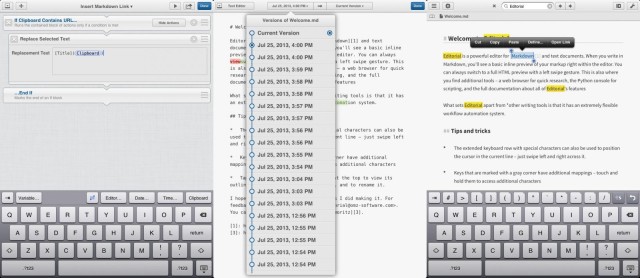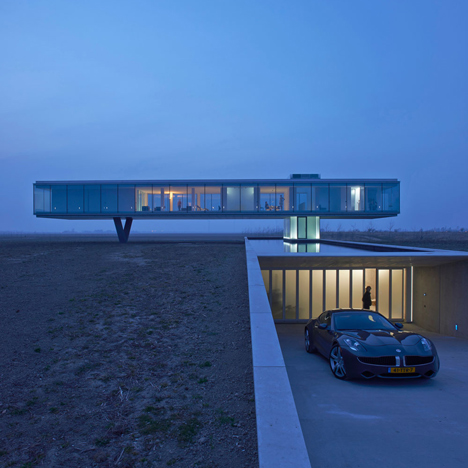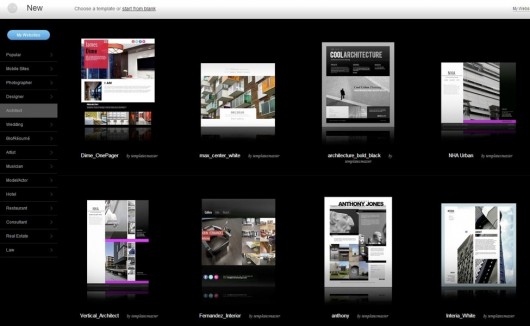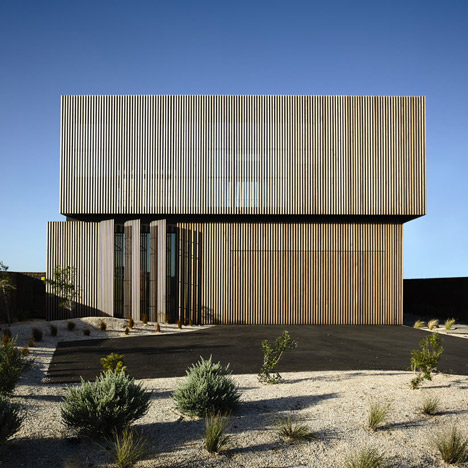This boxy wooden house by Canadian studio MacKay-Lyons Sweetapple Architects extends over the edge of a rocky outcrop on the Atlantic coastline of Nova Scotia (+ slideshow). (more...)

An angular wooden staircase ascends the lobby of this office renovation in the Dutch town of Hoofddorp by Amsterdam-based architects Studioninedots.
(Want more? See NOTCOT.org and NOTCOT.com)
One half of this energy-efficient house in the Netherlands by Paul de Ruiter Architects is raised above the landscape in a glazed box, while the other half is buried underneath a pool of water (+ slideshow). (more...)

Architects: Etcheberrigaray + Matuschka
Location: Santa María, Valparaíso Region, Chile
Project Architect: Klaus Matuschka, Orlando Etcheberrigaray
Team: Rodrigo Méndez
Project Area: 90.0 sqm
Project Year: 2013
Photographs: Marcelo Cáceres
Construction: Nautilus Osvaldo Cardemil A
From the architect. The house is located on land used for farming in the original house, with fruit trees planted in an area of 900 m2, where many of the existing trees are maintained, the construction does not alter the natural condition of the land, we work on a platform with a new level + -0.00, which, together with easing the construction, raises the view to the trees of the place.
The fruit trees are irrigated by canals that flood the field in a controlled way. Thus, the house is built on pilotis, so as to insulate it from moisture in addition to making the thermal insulation of the house more efficient, allowing to ventilate and insulate the underside of the floor structure.

The northeast orientation, to the main views of the farm fruit trees, corresponds to the greater percentage of glazed facade of the house, along with the east facade that overlooks the neighboring lands.
The fruit trees are also incorporated into the house through terraces that make up the garden surface for now, along with the pool, as the field will be kept wild.

The southwest facade is designed as an opaque wall that includes all the furniture developed in the project, parallel to the main axis of the house, closets, master vanity, desk, buffet furniture, kitchen and pantry all designed as a single piece of furniture. This opaque facade is recognized and transformed into the access circulation via a ramp that connects the street level with the house.
Like our other project in Casablanca, Pangal Shelter, we sought to design an efficient and simple house, in terms of use and construction process. This time, we only changed finishes using the same metal structure, a dry construction system that allows great flexibility in the type of cladding and insulation types required.

The house is designed in a single volume, divided into two areas that maintain continuity in space. Social and service areas are in the space with a variable height, and in the simple height enclosure are the bedrooms, all sharing views and orientation.










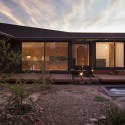


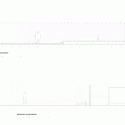


Santa María House / Etcheberrigaray + Matuschka originally appeared on ArchDaily, the most visited architecture website on 04 Dec 2013.
send to Twitter | Share on Facebook | What do you think about this?

It’s unavoidable. In today’s world, in order to reach out to your target audience and promote your services, you need to have a website. And just any won’t do. Keep in mind that if you are an architect, people expect creativity out of you and from your website. An efficient, well-built, and good-looking website is the most convincing marketing tool you have at your disposal.
So, we’ve come up with five tips that explain (1) why a good website is so important; (2) what you should have in mind when creating your website (including what to avoid!); and (3) how to get started immediately, after the break…
1. Help people find your business:
These days everyone uses Google or other search engines to find a solution to their current problem or find information on their interests. Having a website is the best way for you to take advantage of the countless traffic that comes through search engines and social media daily. With little effort you can reach hundreds, if not thousands, of potential clients.
However, you need to make sure your website really does appear when searched for, in order to get the traffic it deserves. To do this, I recommend hiring an online marketing firm/freelancer that can help you optimize your online activity. In the long run, it will be worth your while.
2. Control your online brand:
You, as a brand, would of course like to control what people see when searching for your brand name online. Unfortunately, these days, when everyone can tweet their thoughts and Facebook their experience a simple search can mean that – rather than finding your official website – a potential client would come instead across a tweet of a former client of yours (which could be positive or negative).
Establishing a well-trafficked site is the only way to ensure that your website is the first impression your potential clients get of your brand (again, an online marketer could help with this). Of course, that first impression must be a good one, which leads me to tip #3…
3. Put your portfolio online:
If you are proud of your work, you should put it online for everyone to see. Your portfolio will probably be the most impressive thing on your website, and as such it will be the best thing to help a client see what you are capable of . It will also be the item on your website most likely to be shared on social media platforms.
However, it needs to be displayed properly. Make sure that you do not put in too much information regarding every project you have ever worked on. You can add videos to your portfolio as well to make an even better impression on your website users.
Keep in mind that your images need to be high quality but also reasonably sized (in KBs terms), as the page-load time is crucial for both users and search engines. Test your portfolio page-load time every now and then; if you find it too slow you might consider changing a hosting company or upgrading your package.
4. Do it yourself:
If you cannot afford expensive designers (or just don’t want to pay $x,xxx for a website), you can create your website using IM Creator. This is an extremely convenient, simple way to build a website in no time.
IM Creator publishes lots of new templates every month that accommodate different needs (including portfolios). You can find templates according to the categories and select the perfect one for you; plus, you have the option to customize your template as well. Just add your content and information (location, portfolio, etc.). It is actually as simple as it sounds.
Once you are done with customization, all you need to do is connect it with your domain and publish it. Yes, in three steps you have a website.
5. Stay Competitive:
Having a website that displays your work, tells your story, and even tries to educate the crowd by sharing tips and resources will help you stand out in the crowd and achieve your goals.
I personally love to visit various architects’ websites because I like to know what is going on within the architecture world. I have come across some really good websites; however, a few have tested my patience. They were so complex that I was unable to understand them. Others were just too plain and were designed like websites from the early 2000′s.
If you’re feeling ready to get started, I welcome you to get some inspiration by browsing these architecture and design websites built with IM Creator; the sooner you know how you’d like the perfect website for your firm to be, the sooner you can create it – and the sooner your clients will be able to find you, know your work, and choose to work with you.
This post is sponsored by IM Creator – a free website builder for portfolio website. Create a breathtaking website with IM Creator today.
5 Tips for Creating the Perfect Website for Your Firm originally appeared on ArchDaily, the most visited architecture website on 05 Dec 2013.
send to Twitter | Share on Facebook | What do you think about this?
Sent with Airmail on OS X
